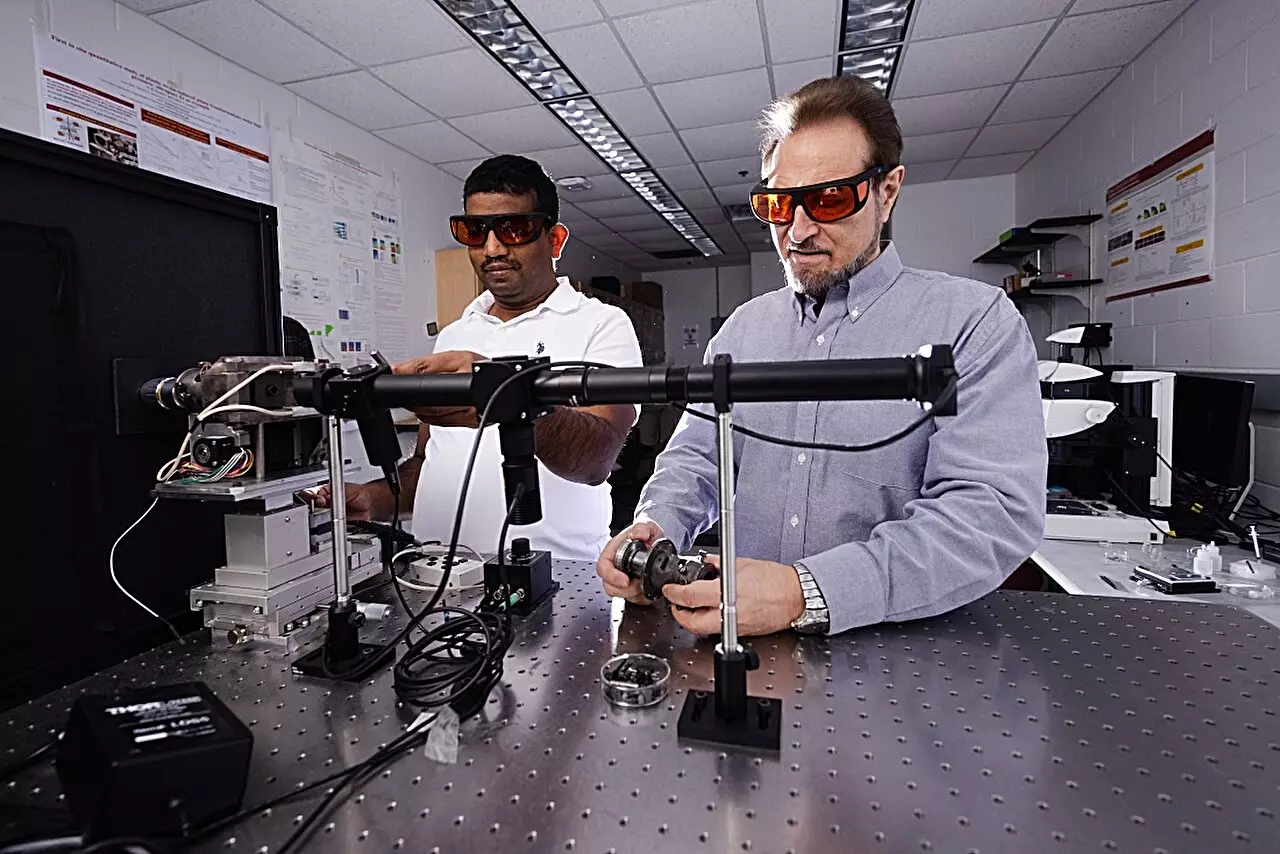Silicon has long been a cornerstone in the field of materials science, playing a pivotal role in electronics and various technological applications. Recent research spearheaded by Valery Levitas and his team at Iowa State University has pushed the boundaries of our understanding of silicon under extreme conditions. By conducting experiments utilizing a rotational diamond anvil cell (RDAC), the researchers are not only observing phase transformations but also exploring how these changes can be harnessed for practical applications.
Traditionally, studies investigating the effects of high pressure on silicon have primarily focused on how variations in pressure can induce different crystalline forms. However, the current research underscores an often overlooked factor: plastic shear deformation. By applying both pressure and shear to silicon samples of various sizes—ranging from one millionth of a meter to 100 billionths of a meter—the team has uncovered a noteworthy phenomenon. They discovered that applying pressure of just 0.3 gigapascals, accompanied by plastic deformation, can induce a transformation of the silicon crystal from its original “Si-I” phase to the “Si-II” phase. Remarkably, this transformation typically requires much higher pressures of around 16.2 gigapascals without the influence of shear.
This breakthrough not only challenges existing literature, but it also opens up new avenues for material transformation processes that can be executed under much more practical conditions. By shifting the focus from solely high pressure to a combination of low pressure and shear, their findings revolutionize how scientists might leverage the mechanical properties of materials to explore novel engineering solutions.
Levitas describes their research as an intersection of mechanics, physics, material science, and applied mathematics, encapsulating a truly interdisciplinary approach. This amalgamation of various scientific methods and perspectives is critical in decoding the complex behavior of materials at the microstructural level. The technique employed allows for real-time analysis, with in situ X-ray diffraction experiments providing immediate insights into the states of silicon under investigation. The collaboration extends to several experts in the field, combining theoretical work with robust experimental validation, ultimately catering to a comprehensive understanding of material behaviors.
This collaboration is vital, considering the complexity of the crystal lattice structures involved. As outlined in their research, the phase transformations can significantly alter the electronic, optical, and mechanical properties of materials. The ability to retrieve nanostructured phases or mixtures that exhibit optimal properties paves the way for advancements in industries reliant on sophisticated materials.
The Potential Impact and Applications of the Findings
The practical implications of this research could be transformative. As Levitas notes, conventional high-pressure techniques often pose logistical and practical challenges for industrial applications. However, the introduction of plastic deformations allows for high-pressure phase transformations to be conducted at more manageable pressures. This is particularly significant for industries using silicon in electronics, optics, and various nanotechnologies.
Levitas’s work emphasizes the significance of microstructure modification rather than solely altering the size or shape of materials. Such nuanced approaches can lead to tailored materials suitable for specific applications, further enhancing the functionality of silicon in next-generation electronic devices. With the potential to unlock beneficial properties through phase transformations at lower pressures, this research could stimulate a new wave of innovations.
The findings surrounding silicon’s behavior under pressure and shear mechanisms unveil exciting prospects for future studies. Levitas expresses the intent to explore even broader realms of material science, as the understanding of these transformations presents countless opportunities. With over two decades of contemplation and research experience guiding these experiments, Levitas anticipates even more groundbreaking outcomes.
This research not only elucidates the intricacies of silicon’s phase transformations but also propels the field of materials science into a new era. As researchers continue to push the envelope through innovative techniques, the full potential of materials like silicon can be realized, promising a future rich with advancements in technology and industrial applications.


Leave a Reply